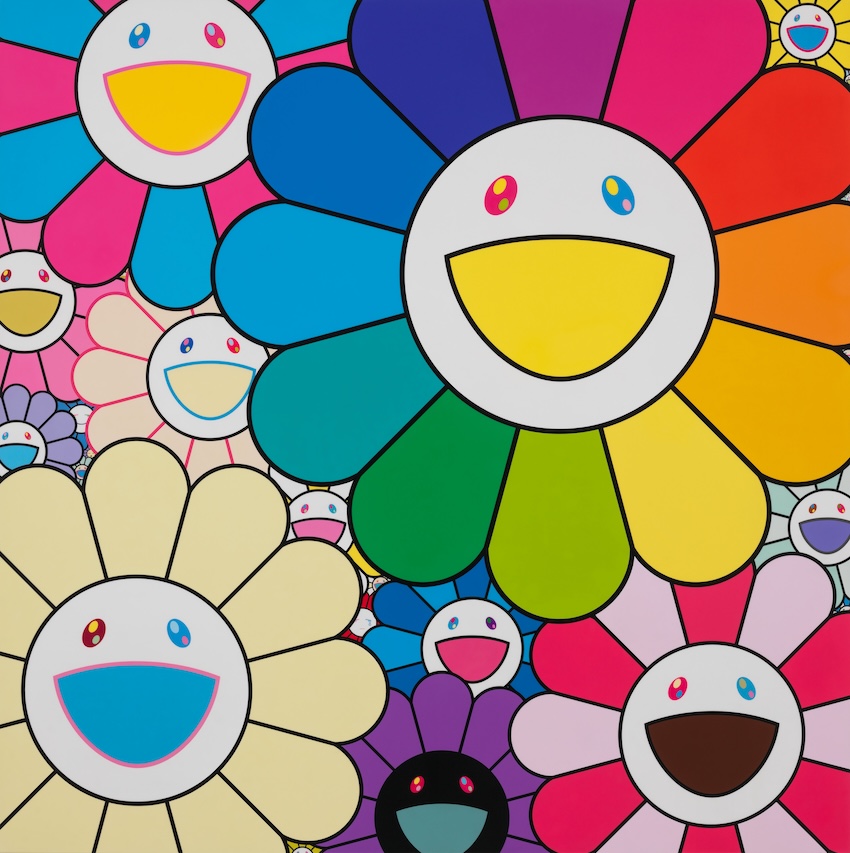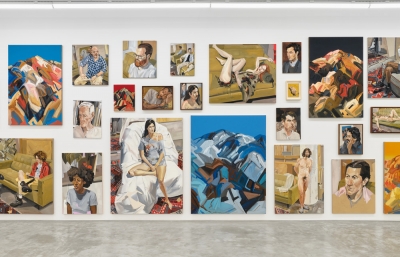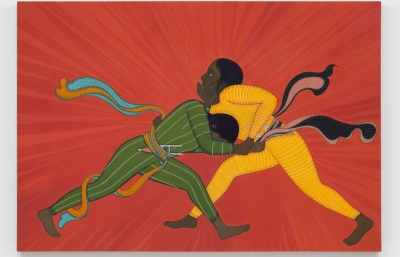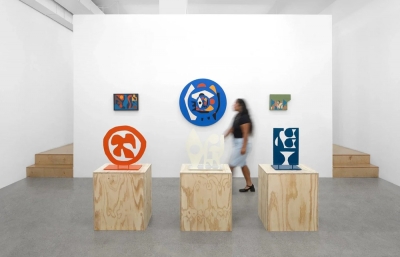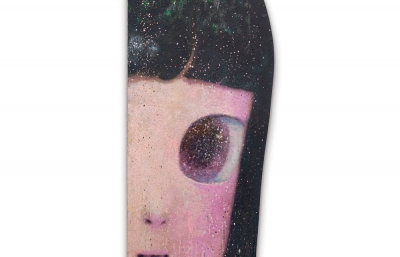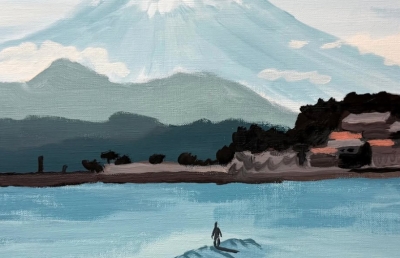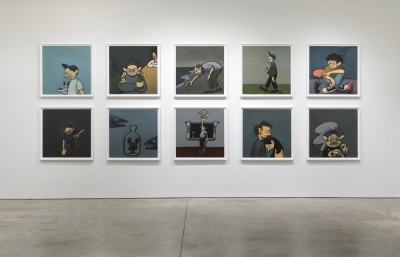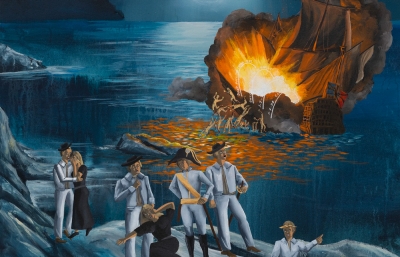Gagosian is pleased to announce Seoul, Kawaii Summer Vacation, an exhibition of new paintings and sculptures by Takashi Murakami presented at the headquarters of Amorepacific, the world-renowned Korean beauty company, in the center of Seoul, opening on September 2. The exhibition takes place in the APMA Cabinet, a project space on the ground floor of the David Chipperfield–designed building. Seoul, Kawaii Summer Vacation represents Murakami’s return to South Korea following MurakamiZombie, a major retrospective of his work held at the Busan Museum of Art in 2023. This is the artist’s first solo exhibition in Seoul since Takashi in Superflat Wonderland at PLATEAU, Samsung Museum of Art, in 2013.
Seoul, Kawaii Summer Vacation explores Murakami’s use of floral motifs across a variety of media, techniques, and formats. The artist’s instantly recognizable smiling flower was originally inspired by the focus on natural forms that characterizes nihonga, the traditional form of Japanese painting in which he was trained. It first appeared in his work in 1995 and resonates with his “Superflat” aesthetic, in which classical techniques are combined with popular imagery—particularly graphic devices borrowed from the interconnected fields of anime and manga, the subcultural phenomenon of obsessive otaku, and the ubiquitous “cute” aesthetic known as kawaii—on a flat picture plane. Along with other icons such as the Mr. DOB character, floral icons populate an ever-expanding body of work in print, film, digital art, and merchandise—as well as painting and sculpture—in which Murakami draws on both historical and contemporary forms and subjects while navigating the fluctuations of the global art market.
Whether depicted as single iconic “portraits” or arranged into elaborate constellations, both of which blend practiced artisanship with accessible appeal, Murakami’s flowers represent an enduring motif in the narratives of both high art and popular media. And while joyful, vibrant, and infused with resilience and hope, they also form part of an overarching commentary on late-capitalist consumerism and taste. The centerpiece of the exhibition at APMA Cabinet is Summer Vacation Flowers under the Golden Sky (2025), in which a kaleidoscope of flowers is spread across a partially gold-leaf ground embossed with skulls in a panoramic landscape.
In Tachiaoi-zu (2025), Murakami casts a look back to Japan’s past by interpreting a Kiku‐zu screen by Rinpa school painter and designer Ogata Kōrin (1658–1716) that portrays bunches of hollyhocks in red, pink, and white against a gold-leaf ground. Finally, two sculptures from 2024, both titled Hello Flowerian, each take the form of a small flower-faced figure standing on a pedestal. One sculpture is finished in bright polychrome paint, the other reflective gold leaf. Yet while as outwardly cheerful as the other works on view, these characters’ childlike presentation similarly veils a more complex vision that reflects Murakami’s understanding of postwar Japan’s economic, social, and psychic uncertainties.


